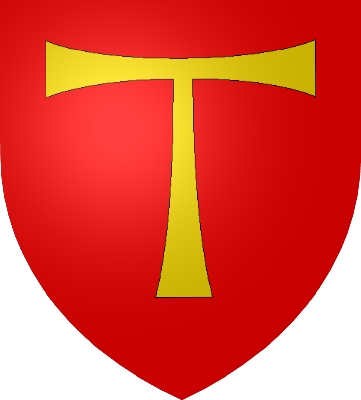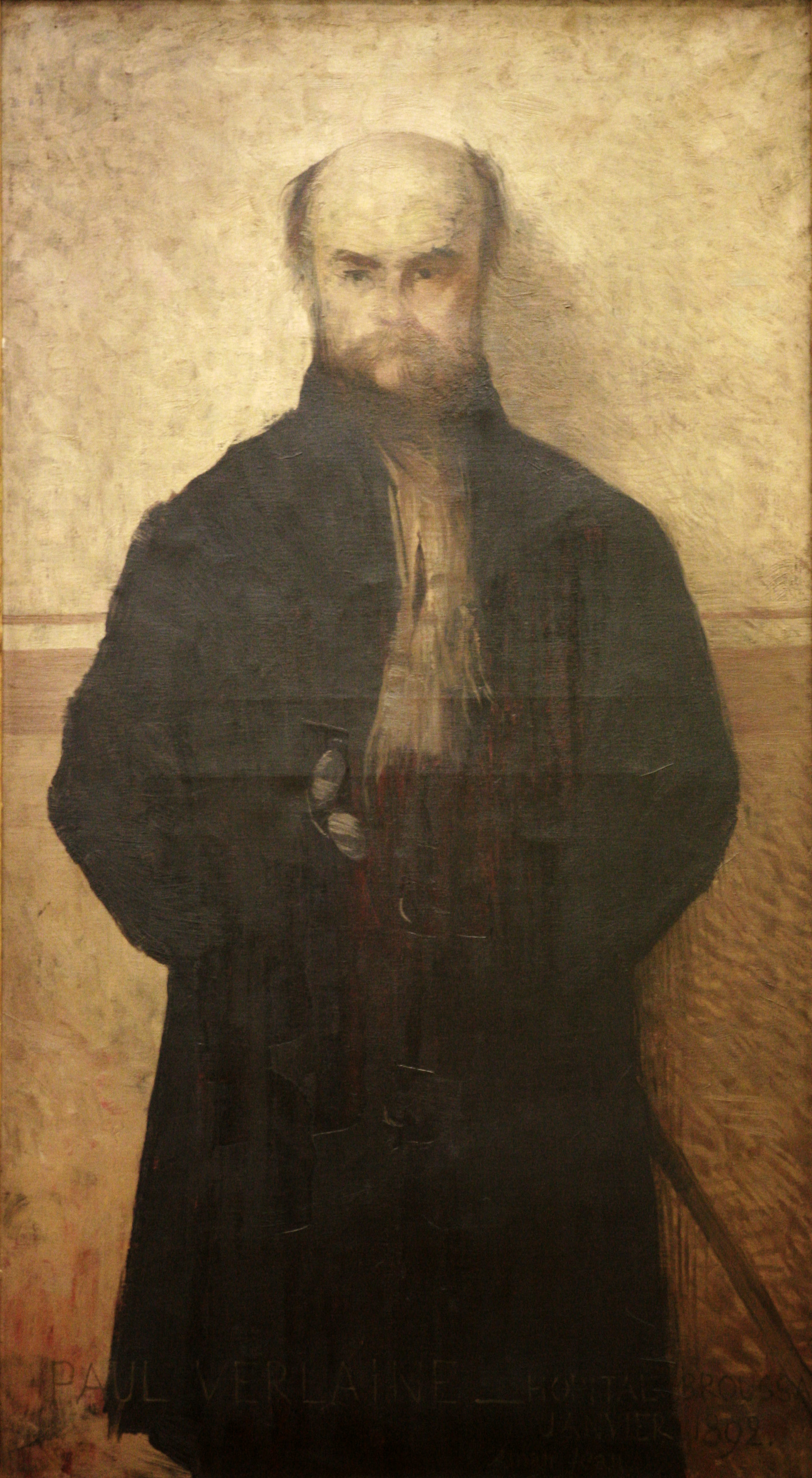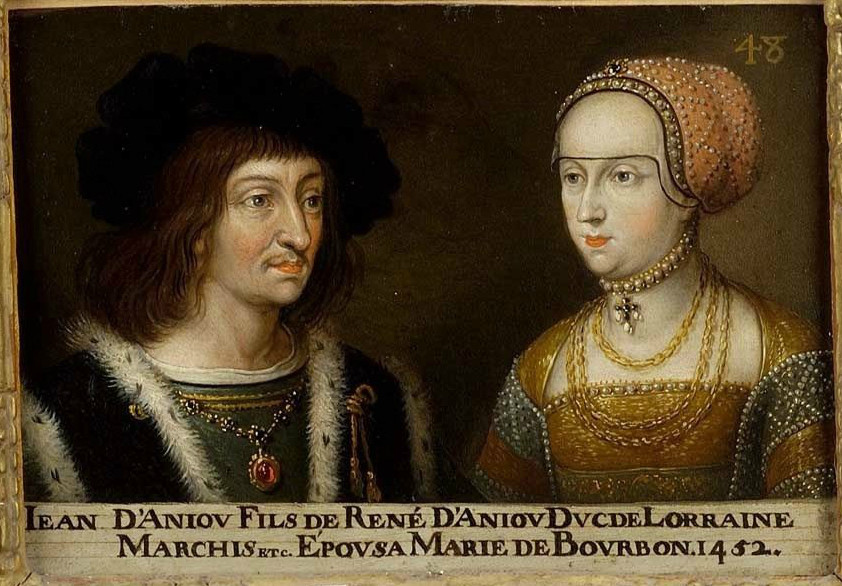|
Henri Of Lorraine-Vaudémont
Henri of Lorraine-Vaudémont (died 20 October 1505, in Joinville) was bishop of Thérouanne, and then bishop of Metz from 1484 to 1505. From an aristocratic family, he was son of Antoine of Vaudémont. Life He was probably born in the early 1430s. He became a canon at Toul and then at Metz. He studied theology at Paris, and became bishop of Thérouanne in 1456. He was administrator of the County of Vaudémont, while his brother Frederick, Count of Vaudémont was on campaign in Catalonia with John II, Duke of Lorraine. On his 1484 nomination as bishop of Metz, a quarrel with the citizens had to be resolved by the intervention of the Emperor Frederick III. He added to Metz Cathedral Metz Cathedral, otherwise the Cathedral of Saint Stephen, Metz (french: Cathédrale Saint Étienne de Metz), is a Roman Catholic cathedral in Metz, capital of Lorraine, France. It is dedicated to Saint Stephen. First begun in the early 14th centu .... See also References *Georges Poull, ''La m ... [...More Info...] [...Related Items...] OR: [Wikipedia] [Google] [Baidu] |
Bishop Henri Of Lorraine-Vaudemont Arms
A bishop is an ordained clergy member who is entrusted with a position of authority and oversight in a religious institution. In Christianity, bishops are normally responsible for the governance of dioceses. The role or office of bishop is called episcopacy. Organizationally, several Christian denominations utilize ecclesiastical structures that call for the position of bishops, while other denominations have dispensed with this office, seeing it as a symbol of power. Bishops have also exercised political authority. Traditionally, bishops claim apostolic succession, a direct historical lineage dating back to the original Twelve Apostles or Saint Paul. The bishops are by doctrine understood as those who possess the full priesthood given by Jesus Christ, and therefore may ordain other clergy, including other bishops. A person ordained as a deacon, priest (i.e. presbyter), and then bishop is understood to hold the fullness of the ministerial priesthood, given responsibility by ... [...More Info...] [...Related Items...] OR: [Wikipedia] [Google] [Baidu] |
Joinville, Haute-Marne
Joinville () is a Communes of France, commune in the Haute-Marne Departments of France, department in north-eastern France. Originally spelled ''Jonivilla'' or ''Junivilla'' in Latin language, Latin, in the Middle Ages it was the site of Lordship of Joinville, an important lordship in the county of Champagne. Its medieval Castle, château-fort, which gave to members of the House of Guise their title, ''Prince de Joinville'', was demolished during the French Revolution, Revolution of 1789, but the 16th-century Château du Grand Jardin built by Claude, Duke of Guise, Claude de Lorraine, duc de Guise, has been restored. Population Transport Joinville station is served by regional trains between Saint-Dizier and Chaumont station, Chaumont. Joinville Mussey Airport (ICAO code LFFJ) is a small aifield, mainly used for gliding. Twin towns – sister cities Joinville is Twin towns and sister cities, twinned with: * Buckingham, United Kingdom Personalities * Jean de Joinville * ... [...More Info...] [...Related Items...] OR: [Wikipedia] [Google] [Baidu] |
Bishop Of Thérouanne
A bishop is an ordained clergy member who is entrusted with a position of authority and oversight in a religious institution. In Christianity, bishops are normally responsible for the governance of dioceses. The role or office of bishop is called episcopacy. Organizationally, several Christian denominations utilize ecclesiastical structures that call for the position of bishops, while other denominations have dispensed with this office, seeing it as a symbol of power. Bishops have also exercised political authority. Traditionally, bishops claim apostolic succession, a direct historical lineage dating back to the original Twelve Apostles or Saint Paul. The bishops are by doctrine understood as those who possess the full priesthood given by Jesus Christ, and therefore may ordain other clergy, including other bishops. A person ordained as a deacon, priest (i.e. presbyter), and then bishop is understood to hold the fullness of the ministerial priesthood, given responsibility by ... [...More Info...] [...Related Items...] OR: [Wikipedia] [Google] [Baidu] |
Bishop Of Metz
Metz ( , , lat, Divodurum Mediomatricorum, then ) is a city in northeast France located at the confluence of the Moselle and the Seille rivers. Metz is the prefecture of the Moselle department and the seat of the parliament of the Grand Est region. Located near the tripoint along the junction of France, Germany and Luxembourg,Says J.M. (2010) La Moselle, une rivière européenne. Eds. Serpenoise. the city forms a central place of the European Greater Region and the SaarLorLux euroregion. Metz has a rich 3,000-year history,Bour R. (2007) Histoire de Metz, nouvelle édition. Eds. Serpenoise. having variously been a Celtic ''oppidum'', an important Gallo-Roman city,Vigneron B. (1986) Metz antique: Divodurum Mediomatricorum. Eds. Maisonneuve. the Merovingian capital of Austrasia,Huguenin A. (2011) Histoire du royaume mérovingien d'Austrasie. Eds. des Paraiges. pp. 134,275 the birthplace of the Carolingian dynasty,Settipani C. (1989) Les ancêtres de Charlemagne. Ed. So ... [...More Info...] [...Related Items...] OR: [Wikipedia] [Google] [Baidu] |
Antoine Of Vaudémont
Antoine is a French given name (from the Latin ''Antonius'' meaning 'highly praise-worthy') that is a variant of Danton, Titouan, D'Anton and Antonin. The name is used in France, Switzerland, Belgium, Canada, West Greenland, Haiti, French Guiana, Madagascar, Benin, Niger, Burkina Faso, Ivory Coast, Guinea, Senegal, Mauritania, Western Sahara, Morocco, Algeria, Tunisia, Chad, Central African Republic, Cameroon, Equatorial Guinea, Gabon, Republic of the Congo, Democratic Republic of the Congo, Burundi, and Rwanda. It is a cognate of the masculine given name Anthony. Similar names include Antaine, Anthoine, Antoan, Antoin, Antton, Antuan, Antwain, Antwan, Antwaun, Antwoine, Antwone, Antwon and Antwuan. Feminine forms include Antonia, Antoinette, and (more rarely) Antionette. As a first name *Antoine Alexandre Barbier (1765–1825), a French librarian and bibliographer *Antoine Arbogast (1759–1803), a French mathematician *Antoine Arnauld (1612–1694), a French theologian, ... [...More Info...] [...Related Items...] OR: [Wikipedia] [Google] [Baidu] |
Toul
Toul () is a commune in the Meurthe-et-Moselle department in north-eastern France. It is a sub-prefecture of the department. Geography Toul is between Commercy and Nancy, and the river Moselle and Canal de la Marne au Rhin. Climate Toul has a oceanic climate (Köppen climate classification ''Cfb''). The average annual temperature in Toul is . The average annual rainfall is with June as the wettest month. The temperatures are highest on average in July, at around , and lowest in January, at around . The highest temperature ever recorded in Toul was on 11 August 1998; the coldest temperature ever recorded was on 9 January 1985. History Toul was known to the Romans as , and was the capital of the Gaulish tribe of the Leuci. In 550, King Theudebald convoked a synod at Toul. In 612, King Theudebert II of Austrasia was defeated by King Theuderic II of Burgundy near Toul. By the Treaty of Meerssen of 870, Toul became part of East Francia, the later Holy Roman Empire. Du ... [...More Info...] [...Related Items...] OR: [Wikipedia] [Google] [Baidu] |
Metz
Metz ( , , lat, Divodurum Mediomatricorum, then ) is a city in northeast France located at the confluence of the Moselle and the Seille rivers. Metz is the prefecture of the Moselle department and the seat of the parliament of the Grand Est region. Located near the tripoint along the junction of France, Germany and Luxembourg,Says J.M. (2010) La Moselle, une rivière européenne. Eds. Serpenoise. the city forms a central place of the European Greater Region and the SaarLorLux euroregion. Metz has a rich 3,000-year history,Bour R. (2007) Histoire de Metz, nouvelle édition. Eds. Serpenoise. having variously been a Celtic ''oppidum'', an important Gallo-Roman city,Vigneron B. (1986) Metz antique: Divodurum Mediomatricorum. Eds. Maisonneuve. the Merovingian capital of Austrasia,Huguenin A. (2011) Histoire du royaume mérovingien d'Austrasie. Eds. des Paraiges. pp. 134,275 the birthplace of the Carolingian dynasty,Settipani C. (1989) Les ancêtres de Charlemagne. Ed. ... [...More Info...] [...Related Items...] OR: [Wikipedia] [Google] [Baidu] |
County Of Vaudémont
A county is a geographic region of a country used for administrative or other purposes Chambers Dictionary, L. Brookes (ed.), 2005, Chambers Harrap Publishers Ltd, Edinburgh in certain modern nations. The term is derived from the Old French denoting a jurisdiction under the sovereignty of a count (earl) or a viscount.The Oxford Dictionary of English Etymology, C. W. Onions (Ed.), 1966, Oxford University Press Literal equivalents in other languages, derived from the equivalent of "count", are now seldom used officially, including , , , , , , , and ''zhupa'' in Slavic languages; terms equivalent to commune/community are now often instead used. When the Normans conquered England, they brought the term with them. The Saxons had already established the districts that became the historic counties of England, calling them shires;Vision of Britai– Type details for ancient county. Retrieved 31 March 2012 many county names derive from the name of the county town (county seat) with t ... [...More Info...] [...Related Items...] OR: [Wikipedia] [Google] [Baidu] |
Catalonia
Catalonia (; ca, Catalunya ; Aranese Occitan: ''Catalonha'' ; es, Cataluña ) is an autonomous community of Spain, designated as a ''nationality'' by its Statute of Autonomy. Most of the territory (except the Val d'Aran) lies on the northeast of the Iberian Peninsula, to the south of the Pyrenees mountain range. Catalonia is administratively divided into four provinces: Barcelona, Girona, Lleida, and Tarragona. The capital and largest city, Barcelona is the second-most populated municipality in Spain and the fifth-most populous urban area in the European Union.Demographia: World Urban Areas – Demographia, April 2018 Current day Catalonia comprises most of the medieval and early modern Principality o ... [...More Info...] [...Related Items...] OR: [Wikipedia] [Google] [Baidu] |
John II, Duke Of Lorraine
John II of Anjou ( Nancy, August 2, 1426 – December 16, 1470, Barcelona) was Duke of Lorraine from 1453 to his death. He was the son of René of Anjou and Isabella, Duchess of Lorraine. He was married to Marie de Bourbon, daughter of Charles I, Duke of Bourbon. Duchy John inherited the duchy from his mother, Duchess Isabelle, during the life of his father, Duke René of Anjou, also Duke of Lorraine and titular king of Naples. As heir-apparent of Naples, he was styled the Duke of Calabria and spent most of his time engaging in plots for the Angevin recovery of Naples. In 1460, he decisively defeated the king of Naples Ferdinand at Nola, but was unable to prevent others from coming to his aid. He was defeated at Troia in 1462 and at Ischia in 1465. In 1466, the Catalans chose his father as King of Aragon, and he was created Prince of Girona, as heir-apparent. He went into Catalonia to press the family's claims, but died, supposedly by poison, in Barcelona. Personal In 1 ... [...More Info...] [...Related Items...] OR: [Wikipedia] [Google] [Baidu] |
Frederick III, Holy Roman Emperor
Frederick III (German: ''Friedrich III,'' 21 September 1415 – 19 August 1493) was Holy Roman Emperor from 1452 until his death. He was the fourth king and first emperor of the House of Habsburg. He was the penultimate emperor to be crowned by the pope, and the last to be crowned in Rome. Prior to his imperial coronation, he was duke of the Inner Austrian lands of Styria, Carinthia and Carniola from 1424, and also acted as regent over the Duchy of Austria from 1439. He was elected and crowned King of Germany in 1440. His reign of 53 years is the longest in the history of the Holy Roman Empire or the German Monarchy. Upon his death in 1493 he was succeeded by his son Maximilian I. During his reign, Frederick concentrated on re-uniting the Habsburg " hereditary lands" of Austria and took a lesser interest in Imperial affairs. Nevertheless, by his dynastic entitlement to Hungary as well as by the Burgundian inheritance, he laid the foundations for the later Habsburg Em ... [...More Info...] [...Related Items...] OR: [Wikipedia] [Google] [Baidu] |








